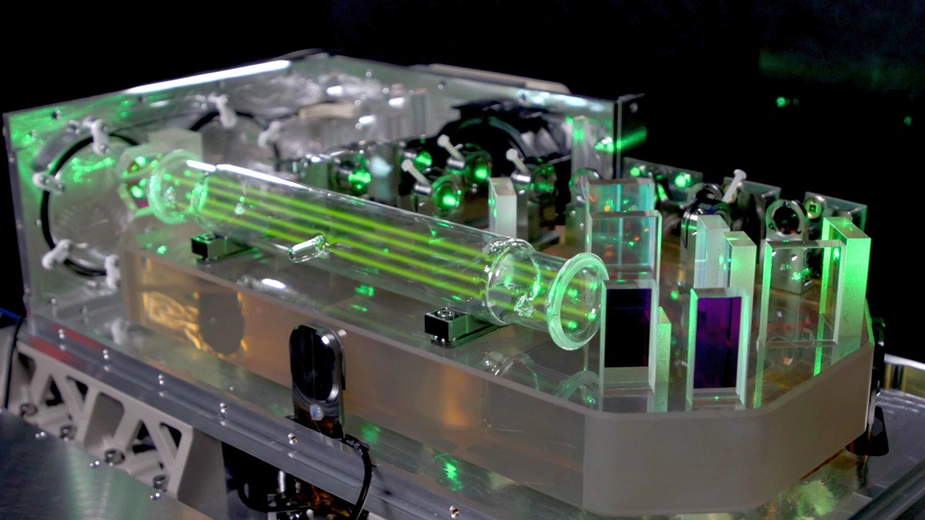DLR laser clock achieves world-class accuracy
Laser clocks are set to improve satellite navigation and deliver a precise global time signal
A new laser clock from the German Aerospace Center (Deutsches Zentrum für Luft- und Raumfahrt; DLR) has achieved a record level of accuracy for optical clocks with gas cells: in 30 million years, it would be off by just one second. The quantum properties of iodine molecules determine the rhythm of this laser clock.
Space-grade laser clocks are set to contribute to positioning systems with centimetre accuracy and deliver a global time standard. They promise new possibilities for more powerful data transfer in areas as varied as global communications, network mobility, autonomous driving, trade and logistics.
DLR is currently developing and building a space-grade laser clock as part of the COMPASSO project. From 2027, it will be tested on the International Space Station ISS with the aim of using optical clocks on satellites.
The DLR Institute of Quantum Technologies, the DLR Institute of Communications and Navigation, the DLR Institute of Optical Sensor Systems and the DLR Institute of Space Systems are involved in the development of the COMPASSO laser clock. DLR's Galileo Competence Center is leading the project in close cooperation with the DLR Institute of Software Technology and DLR Space Operations and Astronaut Training. Project participants from industry and research include Tesat-Spacecom, Menlo Systems, Airbus Defence and Space, SpaceTech Immenstaad, the Institute of Scientific Instruments at the Czech Academy of Sciences and the Ferdinand-Braun-Institute.
